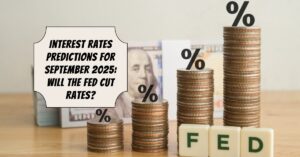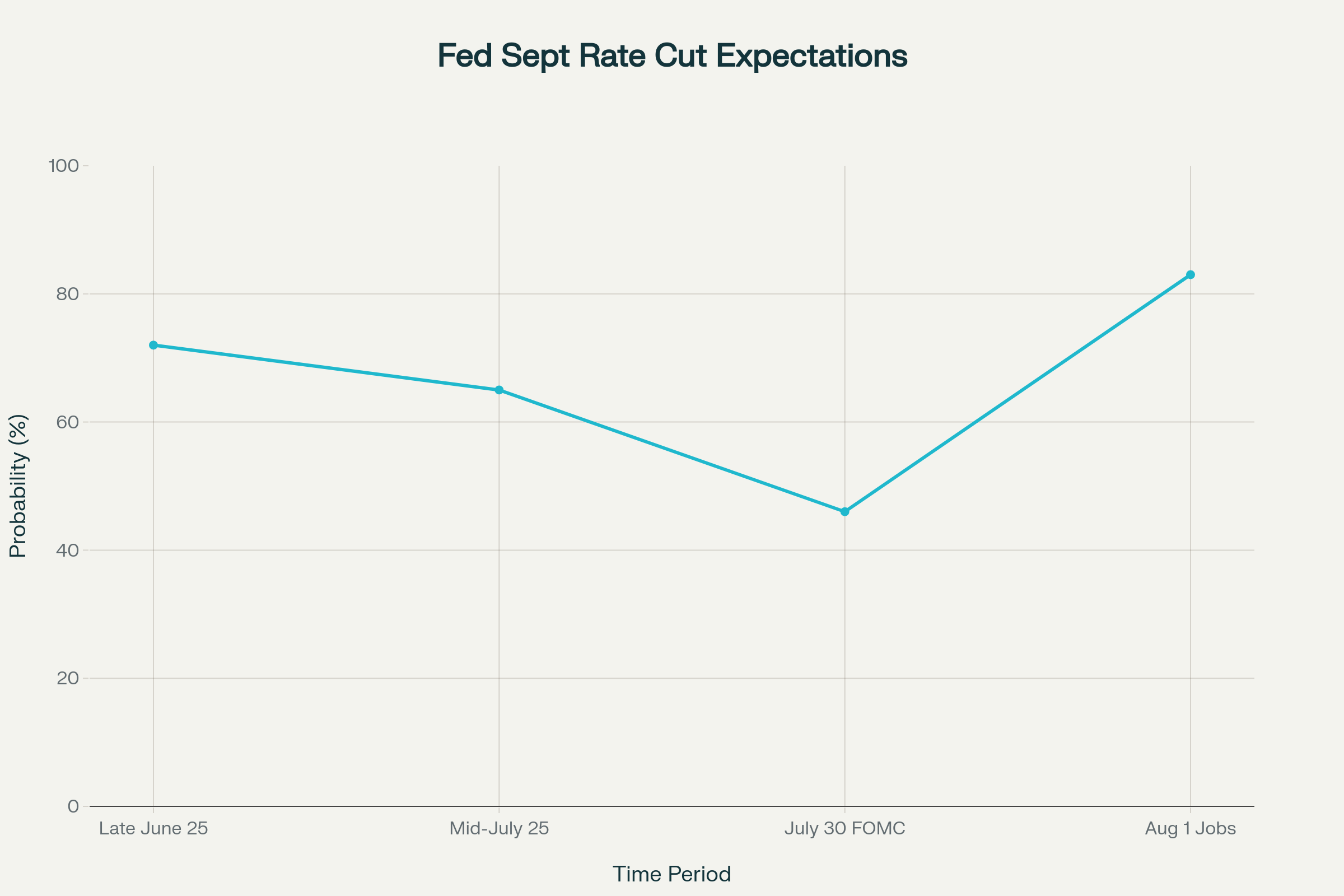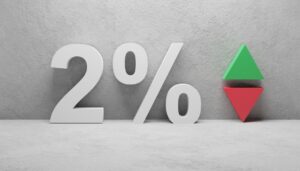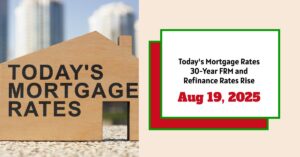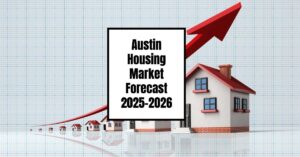Wondering where mortgage rates are headed? If you're like me, you're probably watching the market like a hawk, trying to figure out the best time to buy or refinance. Warren Buffett's Berkshire Hathaway recently shared its U.S. Real Estate Market Forecast, and it sheds some light on what we might expect. Brace yourself: While immediate, dramatic relief isn't likely, there is cautious optimism for gradual improvement in 2026.
Mortgage Rates Predictions 2026 by Warren Buffett’s Berkshire Hathaway
Let's dive into the details and what this actually means for you.
Understanding the Current Uncertainty
Let me tell you, this year has been a rollercoaster. World events and all the financial market craziness have created a whole lot of uncertainty, especially when it comes to housing. And right now, according to the Berkshire Hathaway report, it all hinges on “wild cards” that could heavily influence how the year wraps up and what mortgage rate changes await us in 2026.
Danielle Hale, the chief economist at Realtor.com®, noticed rates dipped a bit from April to early May, which might have nudged pending home sales upward slightly. But then, bam! Rates started climbing again in mid-May.
The Experts Weigh In: When Will We See Relief?
The truth is, most experts aren't expecting any significant relief until 2026 or later. The forecast states, “meaningful relief may not arrive until 2026 or later, as mortgage interest rates are unlikely to decline.” A hard pill to swallow, I know. But, that doesn't mean we need to lose all hope.
Recent Rate Drops and the Fed's Role
There's some good news amid all this – mortgage interest rates have been slowly decreasing lately, even without any help from the Federal Reserve. As of August 7, 2025, the average rate on a 30-year fixed-rate mortgage was 6.63%, according to Freddie Mac. That's the lowest it has been since April!
Sam Khater, the chief economist at Freddie Mac, pointed out that lower rates boost what homebuyers can afford. And he's right! According to him, you might be able to save thousands of dollars by shopping around for quotes from different lenders.
The Federal Reserve Open Market Committee (FOMC) decided to keep interest rates steady, which could pave the way for a potential policy shift as early as the fall. I'm not an economist, but I see this as a positive sign.
Cautious Optimism for 2026
Hannah Jones, a senior economic research analyst at Realtor.com, makes a pretty valid point: mortgage rates have been falling in recent weeks, and the forecast leans towards cautious optimism for 2026. The magic words are “cautious optimism,” meaning we should manage our expectations.
Many analysts expect the Federal Reserve to start cutting rates towards the end of 2025, followed by more cuts in 2026. This is the potential relief we're all looking for.
Forecast Breakdown: Who's Saying What?
Here's a quick overview of what the major players are predicting:
- Fannie Mae: The most optimistic of the bunch, projecting a rate of 6.1% by the end of 2025 and 5.8% in 2026.
- National Association of Home Builders (NAHB): Expects the 30-year fixed-rate mortgage to stay in the mid-6% range through the end of 2025, dipping below 6% in late 2026.
- Mortgage Bankers Association (MBA): Forecasts average rates of 6.7% in Q3 2025, easing slightly to 6.6% by the end of the year and 6.5% in Q1 2026.
To put it into a cleaner perspective, here is a summary of the forecast:
| Organization | End of 2025 Rate | 2026 Rate |
|---|---|---|
| Fannie Mae | 6.1% | 5.8% |
| National Association of Home Builders | Mid-6% range | Below 6% (late 2026) |
| Mortgage Bankers Association | 6.6% | 6.5% (Q1) |
Hannah Jones also wisely suggests that if the Fed decides to cut rates gradually, mortgage rates could slowly decline, making homes more affordable for some buyers. But she also notes that inflation and the market conditions will be the real factors of how much these Fed cuts translate to lowering borrowing costs.
Related Topics:
Mortgage Rates Predictions Next 90 Days: August to October 2025
Mortgage Rates Predictions for the Next 6 Months: August to December 2025
Mortgage Rates Predictions for the Next 2 Years: 2026 and 2027
What's Happening with Home Inventory?
The NAHB also pointed out that persistent interest rates and economic uncertainty caused a 13.7% drop in new home sales in May, based on signed purchase contracts.
While home inventory has gone up to a 9.8-month supply, 37% of builders are cutting prices. This is great for buyers. I think the increase in inventory means finding the right home could become easier!
As Realtor.com has found, the pace of sales slowed down in July. It took 58 days to sell a home—seven days longer than the previous year. Prices were reduced for 20.6% of listings in July.
My Takeaway for Homebuyers
Honestly, I think Warren Buffett's Berkshire Hathaway‘s forecast confirms what many of us already suspected: no sudden drop is in sight. You might need to adjust your expectations.
With that being said, for homebuyers, the shift will most likely be modest instead of dramatic. So, it's better to plan your purchases around gradual rate relief rather than waiting for a sharp drop. In other words, don't try to time the market perfectly because it's pretty unpredictable.
Key Takeaways
- Immediate and significant relief is unlikely until 2026 or later.
- Rates have decreased recently, which could boost your purchasing power if you find a home you like.
- Keep a close eye on what the Fed is doing – rate cuts could lead to lower mortgage rates, but this also depends on broader conditions such as inflation.
- Home inventory is rising, and builders are cutting prices, so you might have an advantage if you are currently buying a home.
What to do Now
- Shop Around: Don't just go with the first lender you find. Get quotes from multiple lenders to see where you can get the best rate. Even a small difference can save you thousands over the life of a loan.
- Improve Your Credit Score: The better your credit score, the better the interest rate you'll qualify for.
- Save for a Larger Down Payment: A larger down payment can lower your loan amount and potentially your interest rate.
- Consider Different Loan Types: Look into both fixed-rate and adjustable-rate mortgages to see which one best fits your financial situation and risk tolerance.
- Talk to a Financial Advisor: A financial advisor can help you assess your financial situation and determine the best course of action for your homebuying goals.
Final Thoughts:
While the Berkshire Hathaway report throws some cold water on immediate, drastic rate drops, it also offers a dose of cautious optimism. In the meantime, do your homework, and position yourself to pounce when the opportunity strikes. Real estate depends on the real-world and market conditions, so planning ahead is key.
Capitalize Amid Rising Mortgage Rates
With mortgage rates expected to remain high in 2025, it’s more important than ever to focus on strategic real estate investments that offer stability and passive income.
Norada delivers turnkey rental properties in resilient markets—helping you build steady cash flow and protect your wealth from borrowing cost volatility.
HOT NEW LISTINGS JUST ADDED!
Speak with a seasoned Norada investment counselor today (No Obligation):
(800) 611‑3060
Also Read:
- Will Mortgage Rates Go Down in 2025: Morgan Stanley's Forecast
- Mortgage Rate Predictions 2025 from 4 Leading Housing Experts
- Mortgage Rate Predictions for the Next 3 Years: 2026, 2027, 2028
- 30-Year Fixed Mortgage Rate Forecast for the Next 5 Years
- 15-Year Fixed Mortgage Rate Predictions for Next 5 Years: 2025-2029
- Will Mortgage Rates Ever Be 3% Again in the Future?
- Mortgage Rates Predictions for Next 2 Years
- Mortgage Rate Predictions for Next 5 Years
- Mortgage Rate Predictions: Why 2% and 3% Rates are Out of Reach
- How Lower Mortgage Rates Can Save You Thousands?
- How to Get a Low Mortgage Interest Rate?
- Will Mortgage Rates Ever Be 4% Again?



